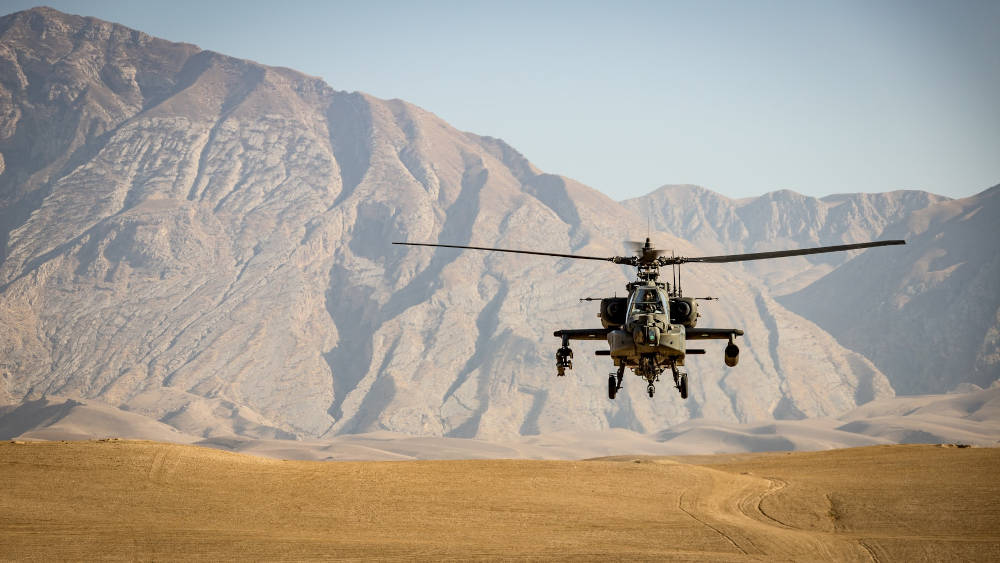[Photo by Andre Klimke on Unsplash]
Good morning,
In the days and weeks to come, how the military might of the US armed forces blinked in Afghanistan will be studied closely. How mighty were they? Some glimpses can be had in award winning journalist Mark Bowden’s book Road Work: Among Tyrants, Heroes, Rogues, and Beasts. His words paint images of how the American forces unseated the Taliban in its earlier avatar.
“The air campaign that was waged over Afghanistan is of a significantly higher order than the one conducted over Vietnam, where flying a fighter-bomber was still essentially a solo act. Today’s air assault is a feat of aerial coordination. From early October of 2001 until the following January the sky over Afghanistan caterwauled with warplanes and support aircraft from the British and American Army, Navy, Marines, and Air Force—so many that the greatest danger faced by crews like those of the Bold Tigers was colliding with one another or being clipped by JDAMs from above.
“At the highest level, in orbit hundreds of miles up, were scores of satellites. Below them, at 40,000 feet or so, were the Buffs and B-1s, which dropped more than half the bombs used on Afghanistan. There were EA-6 Prowlers to jam enemy communications. There were A-10 Thunderbolts and AC-130s for close air support, and air-rescue teams in helicopters—Pave Lows (MH-53Js), Black Hawks (UH-60s), and Jolly Green Giants (HH-53s). Finally, there were the strikers—the F-15s, the F-16s, and the Navy and Marine Corps F-18 Hornets and F-14 Tomcats, which delivered laser-guided precision bombs. There were also the unmanned aerial vehicles (UAVs), armed with cameras and missiles—drones like the Predator (RQ-1), which made a name for itself for the first time in this conflict. Add to these dozens of Extenders (KC-10s) and Stratotankers (KC-135s)—flying gas stations that enabled the armada to stay aloft for hours and hours. And last there were Boss Man and its British equivalent, Spartan, whose job it was to coordinate the whole Kabul-ki Dance.”
Much has changed since then.
Stay safe and have a good day.
In this issue,
- Dr Soumya Swaminathan on preparing for a third wave and opening schools
- Understanding tech-speak
- What fast food really is
Dr Soumya Swaminathan on preparing for a third wave and opening schools
In an interview with Business Line, Dr Soumya Swaminathan, chief scientist at the World Health Organization, explained what India should do to prepare itself for a third wave, should there be one. She said:
- The first is obviously to expand vaccination as quickly as possible and I would say vaccinate the vulnerable first—the 45 plus age group should be covered as rapidly as possible, because most of the severe cases and deaths are going to happen in that group if at all there is a future wave. Also, one needs to look at granular data. Elderly/ vulnerable populations, geographic areas which had less exposure of the virus in the past, and lower vaccine coverage should be prioritised.
- Second is to strengthen the healthcare system. This is not just in terms of making sure that there is oxygen and other supplies. Focus on rural areas. Delta swept through the big cities and 80-90% of the population in these centres now have antibodies. It’s the smaller towns and villages that are at higher risks. So, beefing up the health system in the rural areas is critical.
- The third would be to keep a close eye on the indicators that will warn us of an impending wave—like R0, test positivity rate and so on. We also need to make sure the testing rates stay very high so that we are not missing the cases.
- Then, we should maintain all the public health and social measures like mask wearing and physical distancing.
Business Line asked Dr Swaminathan about a key question: if she thought it was “a good idea to open schools when those below 18 years are yet to be vaccinated”. Here’s her answer.
“I firmly believe that children being out of school any longer is going to have an irreversible impact on a whole generation of our students, particularly, those who come from the underprivileged sections of the society. Children do not need to be vaccinated before reopening schools. There is no country in the world which has waited for children to be vaccinated. We know that children who get infected, get only a very mild case of symptomatic illness. In fact, two-thirds of children in India are seropositive, says ICMR’s sero survey. So why keep millions of children at home?”
Dig deeper
Decoding geek talk
As industries evolve and people congregate, a language forms around it. Take those in technology, the coders, especially. Terms such as bikeshed, rubber ducking, dogfood, bus factors and yak shaving are part of their daily lingo. “People in the industry love using them because it acts like a secret code to be used amongst peers, giving a feeling of belonging,” writes Karina Chow, an engineer, for whom these words are part of the daily vocabulary.
She goes on to explain what these words mean, the backstory to it, and just when it must be used. So, “To bikeshed is to devote way too much time and energy working on and optimizing trivial issues—that are often hypothetical future problems that don’t exist yet—instead of focusing on what’s actually important right now.”
As opposed to that, “Yak shaving is to start working on one task that leads you to perform another, and results in a seemingly never ending queue of tasks, diverting you from the original goal.
“However, unlike bike shedding, oftentimes each of those tasks are important and must be completed at some point. They may even be prerequisites to do the original goal. It often comes in the form of tech debt found while trying to do something else.”
Dig deeper
- 5 commonly used idioms in the tech industry (GitConnected.com)
- Another 3 commonly used idioms in the tech industry
What fast food really is

(Via WhatsApp)
Found anything interesting and noteworthy? Send it to us and we will share it through this newsletter.
And if you missed previous editions of this newsletter, they’re all archived here.
Bookmark Founding Fuel’s special section on Thriving in Volatile Times. All our stories on how individuals and businesses are responding to the pandemic until now are posted there.
Warm regards,
Team Founding Fuel
(Note: Founding Fuel may earn commissions for purchases made through the Amazon affiliate links in this article.)

